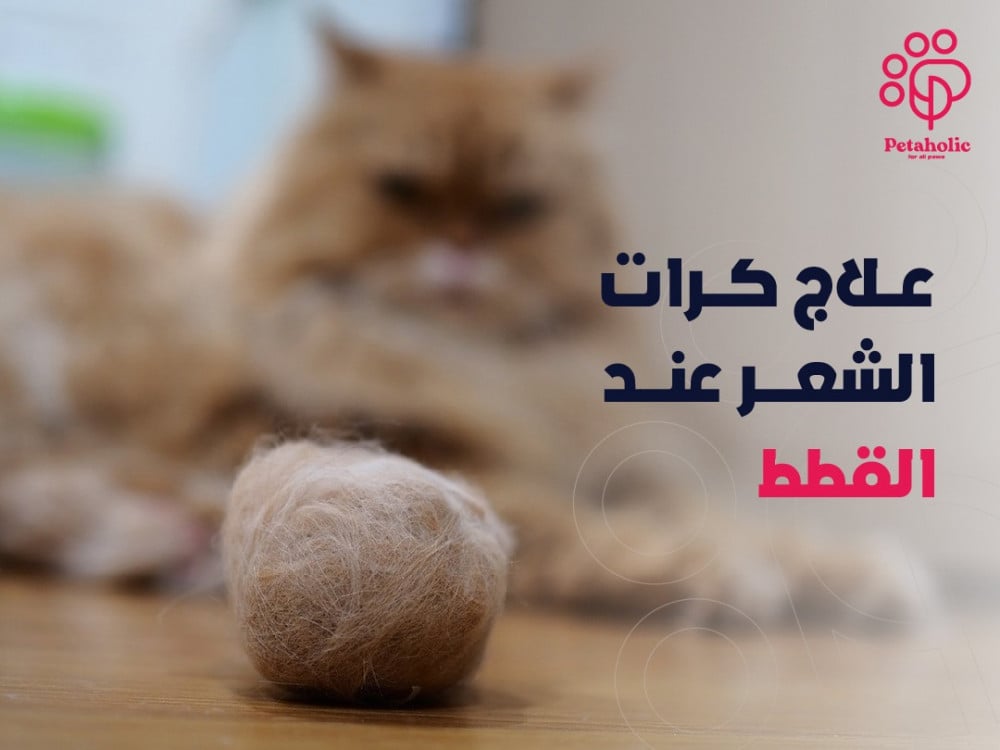
Hairballs are more than an unpleasant cleanup to deal with if you share your life and home with cats! These sticky balls of undigested hair can cause an intestinal obstruction that poses a serious health problem for cats. Keep reading to learn more about hairballs, including ways to treat hairballs in cats and how to deal with them properly. At Petaholic, we also offer you health products that help you get rid of this serious problem.
What is the treatment for cat hairballs that you can prepare at home?
When we researched a treatment for hairballs in cats, we found that nothing can be done to completely prevent hairballs in cats, but there are things you can do to reduce the possibility of your cat getting hairballs, or reduce their contact.
Brush the cat's hair constantly
Even if your cat cleans himself regularly, he will benefit from some extra care from his handler. The more fur you remove from your cat, the less hair will end up as hairballs in her stomach. Brushing your cat daily can be an effective way to reduce hairballs, and it can also provide a fun way to bond with your cat. If you won't be able to get your cat used to being brushed, consider taking it to a professional clinic for a grooming and haircut, especially for long-haired cats, every 6 months or so.
Treating hairballs in cats with cat food designed for hairballs
If your cat regularly vomits hairballs, consider switching to a food specifically formulated to help reduce the problem. Many cat food brands have products specifically designed to deal with hairballs. Nutritional formulas and recipes typically include things like increased fiber, oils, minerals, and vitamins that can help ingested hair pass through the digestive tract naturally.
Add more fiber to your cat's diet
Just like humans, cats need fiber to maintain a healthy digestive system. However, their nutritional needs are different from humans and other carnivores, as they typically do not need plant fiber. But adding some extra fiber to your cat's diet can help reduce hairballs by helping them move through the digestive tract better. Some forms of fiber that can be added include:
- Pumpkin or pumpkin powder
- Apples
- carrots
Keep in mind that cats' fiber needs are very different from humans'. You don't want to add too much to their diet, otherwise your cat could experience some unpleasant side effects. Too much fiber in a cat's diet may prevent them from absorbing nutrients well. So if you're already feeding your cat a food designed for hairballs, more fiber may be a bad idea.
Increase drinking water
If your cat is eating dry food, her diet likely does not provide enough water to meet her hydration needs. As such her digestive system may not be able to function as it should. Provide your cat with a clean source of fresh water. Many cats prefer running water to stagnant water, and may not like the smell or taste of tap water. So you may consider getting a water fountain for your cat to make him drink more. Canned food may also provide adequate hydration to help keep your digestive system moving properly, reducing the risk of hairballs.
Soften the digestive system
Introducing oil into your cat's diet can help moisturize the digestive tract, facilitating the natural passage of hair. Add a teaspoon of olive oil to your cat's food once a week. Offer your cat a small amount of canned tuna or sardines from time to time. You can also apply Vaseline to your cat's paws. You'll lick it, and the gel will line your digestive tract to help the hair pass through.
To avoid hairballs forming in your cat's intestines, we recommend purchasing:
When should you worry about hairballs and take your cat to the vet?
While prone to hairballs may be a no-brainer, there are some instances where you should see your vet. It's rare, but hairballs can grow so large that your cat can't get past them, or they can become lodged in their digestive tract; Which leads to obstruction in the intestine. If the hairball is very large, surgery may be needed to remove it. You should see your vet immediately if your cat has the following symptoms:
- You try to vomit but can't get anything out, or you throw up phlegm or bile.
- You cough constantly.
- She has trouble defecating.
- She has diarrhea.
- She has abdominal bloating.
- You become lethargic and tired.
- She loses her appetite or stops drinking water.
If you want to add a snack to your cat's diet to prevent hairballs, we recommend among our products on Petaholic:
Now we have reached the end of the article, which highlighted how to treat hairballs in cats, and your duty is to try to avoid them in the first place. Remember to brush your cat's hair frequently once or twice a week to reduce potential hair ingestion by your cat. You can also buy all the care supplies for your cat and provide it with the best health care free of problems and diseases.
Read also:-
- The most important types of healthy food for dogs from your kitchen
- What are the signs of birth in dogs and how do I know them?

